Google Ads and Display & Video 360 (DV360) are central to Google's advertising ecosystem, each designed to serve different campaign needs.
While both platforms offer powerful tools for digital advertising, they cater to distinct use cases—Google Ads primarily focuses on search and display within Google’s network, while DV360 provides more advanced programmatic capabilities across multiple channels and ad exchanges.
Understanding the key differences between these platforms is essential for advertisers looking to choose the right solution for their specific goals and strategies.
This article explores the key differences between Google Ads and DV360 to identify the most effective platform for specific advertising goals.
Key Takeaways:
- Core function: Google Ads is a self-serve platform focused on user intent within Google's network. DV360 is a DSP for broad, programmatic ad buying across multiple exchanges.
- Audience & Reach: Google Ads targets users based on keywords and behaviors within its ecosystem. DV360 provides expansive reach, accessing over 90 ad exchanges and layering first- and third-party data for advanced targeting.
- Creative formats: DV360 supports a wider range of rich media, including audio, connected TV (CTV), and advanced dynamic creatives. Google Ads focuses on standard text, display, and video formats.
- Cost & Access: Google Ads is accessible to all budget sizes with no minimum spend. DV360 is built for large advertisers and agencies, often requiring significant budgets and sometimes a reseller partnership.
- Best use case: Use Google Ads for direct response, lead generation, and e-commerce sales. Use DV360 for large-scale brand awareness, complex audience targeting, and multi-channel campaigns.
What Is Google Ads? The Foundation of PPC Advertising
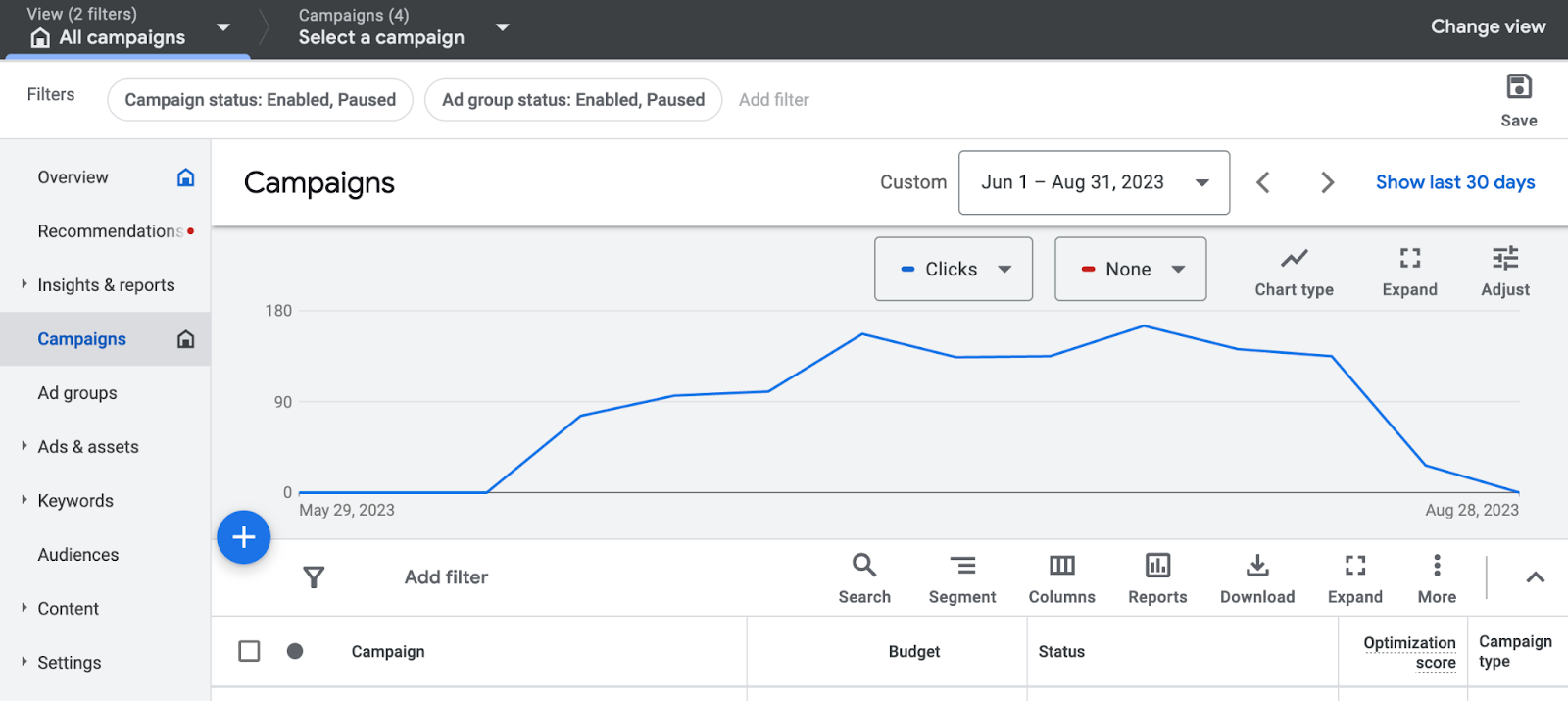
Google Ads, formerly Google AdWords, is the most widely used online advertising platform. It reaches over 90% of internet users worldwide and commands 69% of the pay-per-click market.
Google Ads allows businesses of all sizes to show ads to customers across Google's massive network. The platform is built around the concept of user intent. It helps you connect with people actively searching for products or services like yours.
Core Purpose: Capturing High-Intent Users
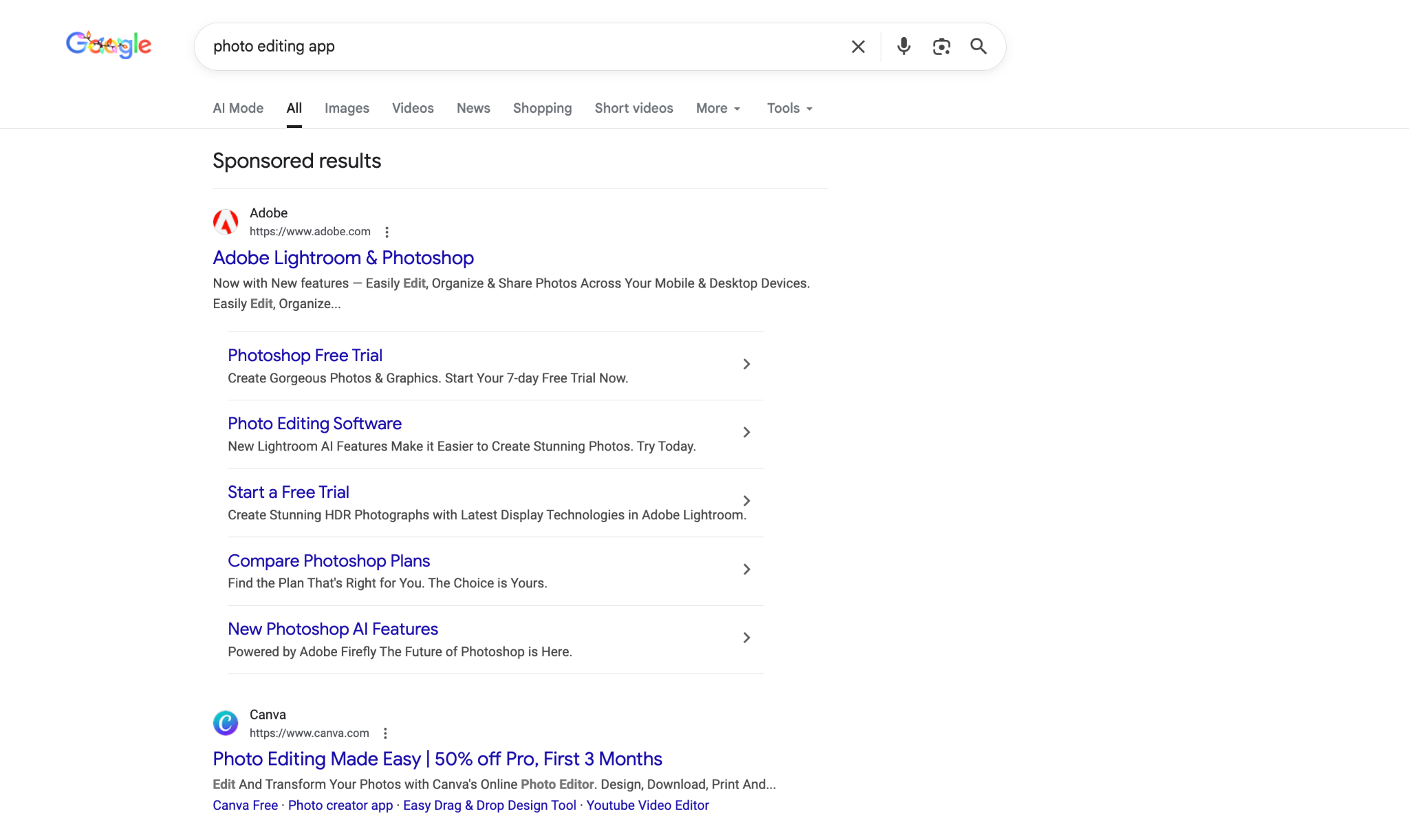
The primary strength of Google Ads is its ability to capture demand. When someone searches on Google, they are expressing a specific need. Google Ads places your business directly in their path at that exact moment.
This makes it an incredibly powerful tool for driving conversions, leads, and sales. It is the cornerstone of performance marketing for millions of advertisers.
How it Works: The Auction Model
Google Ads operates on a real-time auction system:
- Advertisers bid on keywords relevant to their business.
- When a user searches for that keyword, Google runs an auction.
- The winners' ads are displayed on the search results page.
The outcome is determined by the bid amount and Quality Score. Quality Score measures the relevance of your ad, keywords, and landing page.
Key Channels: Search, Display, YouTube, Shopping
While known for search, Google Ads covers several key channels:
- Google Search Network: Text ads on Google search results pages.
- Google Display Network (GDN): Image and video ads across millions of websites, apps, and videos.
- YouTube: Video ads that play before, during, or after YouTube content.
- Google Shopping: Product listing ads that show product images and prices directly in search results.
- Performance Max: An automated, goal-based campaign type that accesses all Google Ads inventory from a single campaign.
What Is Display & Video 360 (DV360)? The Enterprise DSP
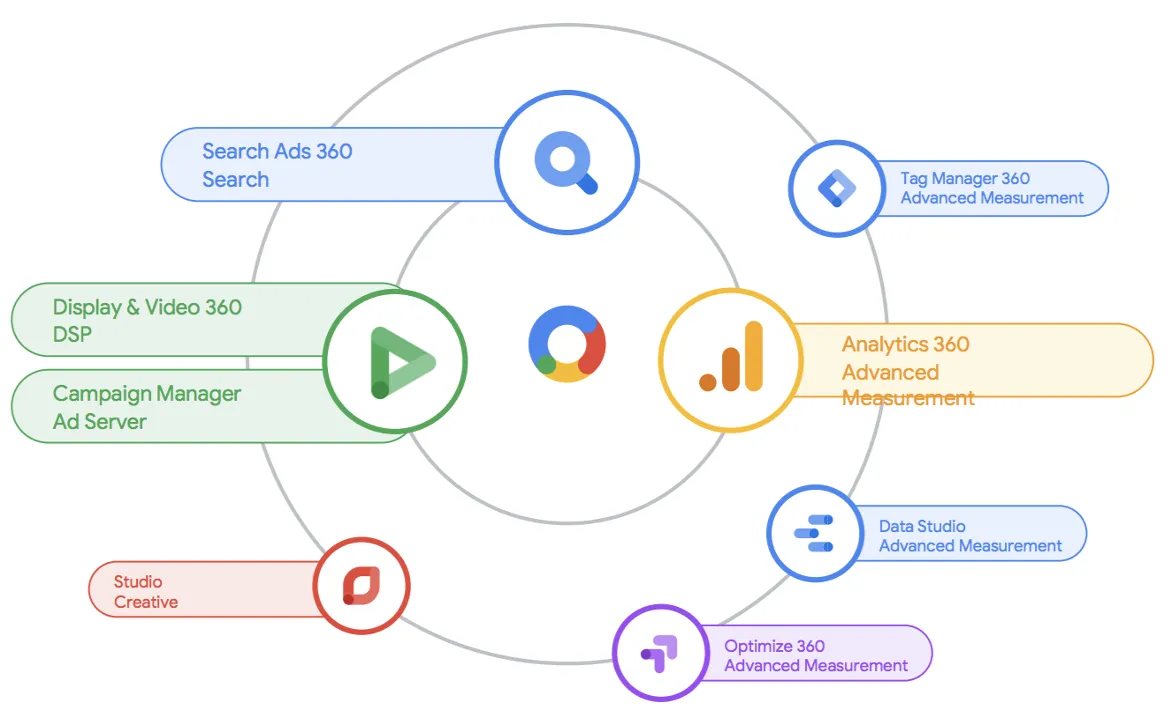
Display & Video 360 (DV360) is Google's enterprise-level demand-side platform (DSP). It is part of the larger Google Marketing Platform.
Unlike Google Ads, DV360 is not a self-contained network. It is a tool for programmatic media buying. It allows advertisers to purchase ad inventory from countless sources across the internet in real-time.
Core Purpose: Programmatic Buying at Scale
DV360's main function is to create and manage demand. It focuses on reaching specific audiences wherever they are online. This is ideal for upper-funnel marketing objectives like brand awareness and consideration.
DV360 provides advertisers with centralized control over campaigns that span display, video, audio, TV, and more. It is built for sophistication and scale.
How it Works: Real-Time Bidding (RTB)
DV360 connects to ad exchanges. These exchanges are massive digital marketplaces where publishers make their ad space available.
Using real-time bidding (RTB), DV360 analyzes each available ad impression. It decides whether to bid based on predefined targeting criteria.
This entire process happens in milliseconds, allowing for highly efficient and targeted ad placements.
Key Channels: Open Exchanges, Premium Publishers, CTV
DV360 offers access to a vastly wider inventory pool than Google Ads. This includes:
- Open Ad Exchanges: Access to over 90 major ad exchanges.
- Premium Publishers: Direct deals with top-tier publishers for guaranteed inventory.
- Connected TV (CTV): Ad placements on smart TVs and streaming devices.
- Digital Audio: Ads on music streaming services and podcasts.
- Digital Out-of-Home (DOOH): Ads on digital billboards and screens in public spaces.
At a Glance: Google Ads vs. DV360 Side-by-Side
Understanding the fundamental differences is easier with a direct comparison. This table highlights the key distinctions between the two platforms across several critical dimensions of digital advertising.
Deep Dive 1: Targeting Capabilities and Audience Reach
Targeting is where the strategic differences between Google Ads and DV360 become most apparent. Both offer powerful ways to reach users, but their methodologies and scope are vastly different.
Google Ads: Keyword and Intent-Driven Targeting
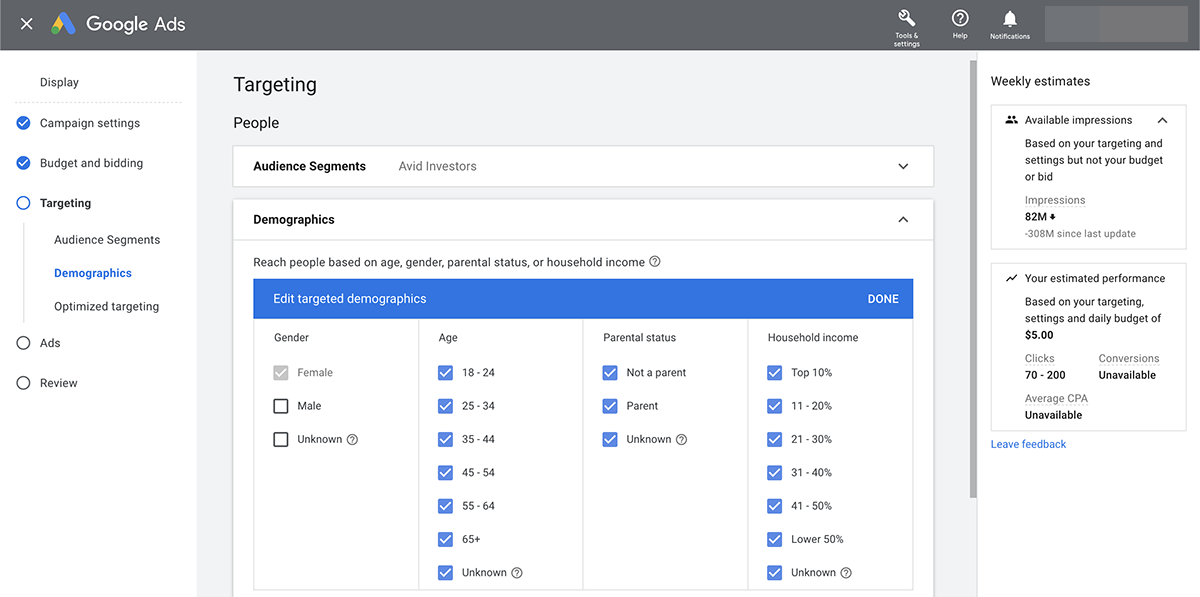
Google Ads excels at targeting based on explicit user intent. The primary method is through keywords on the Search Network. You target what users are actively looking for.
On the Display Network and YouTube, targeting options include:
- In-Market Audiences: Users Google has identified as actively researching or planning to buy something.
- Affinity Audiences: Users with broad, long-term interests (e.g., "sports fans").
- Custom Audiences: Build audiences based on keywords, URLs, and apps they use.
- Remarketing: Targeting users who have previously interacted with your website or app.
These options are powerful but are largely confined to Google's data signals and properties. The reach is immense but operates within Google's ecosystem.
DV360: Advanced Audience Segmentation and Data Layering
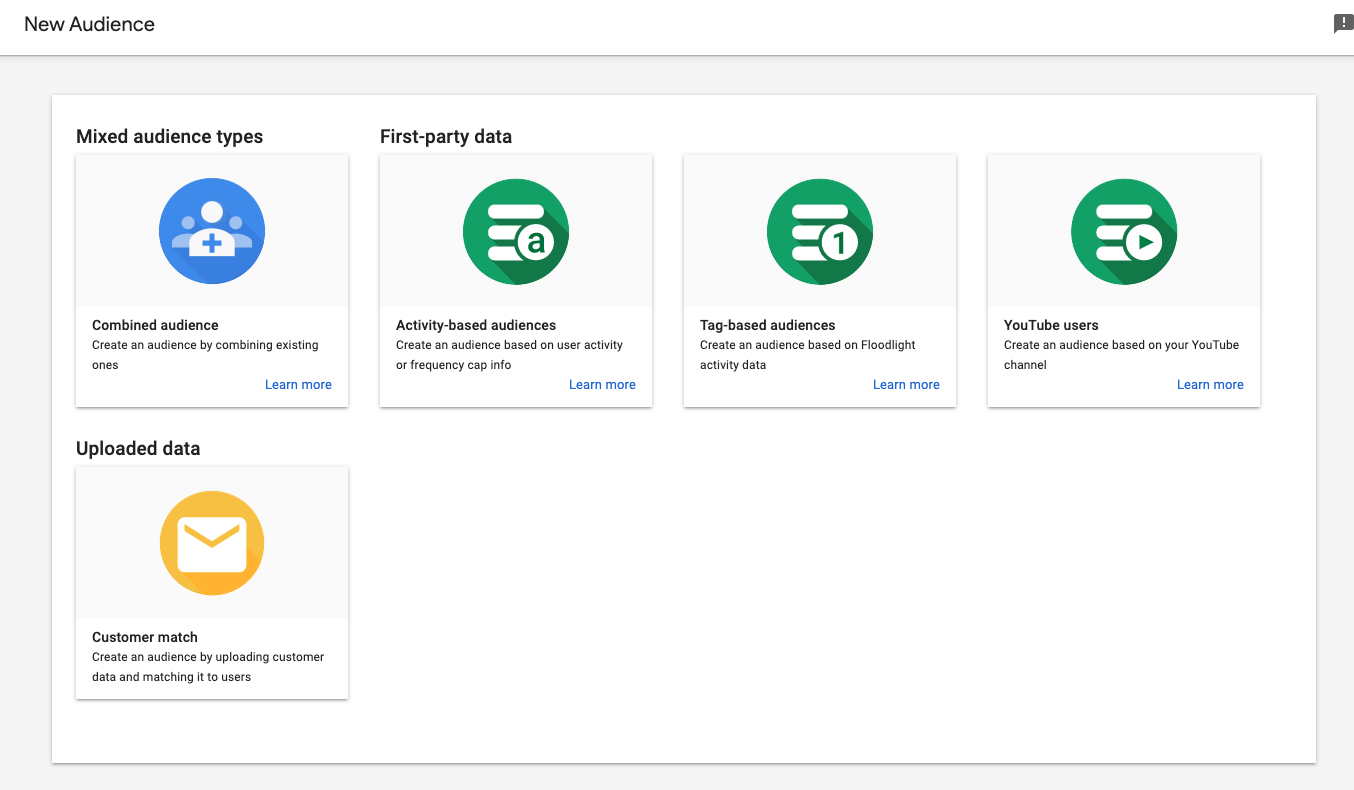
DV360 takes a broader, data-centric approach.
DV360 targeting options allow advertisers to build highly specific audience profiles by combining multiple data sources. This includes your own first-party data (CRM lists, website visitors), Google's audience data, and, crucially, third-party data. This layering allows for incredibly granular targeting.
For example, you could target users who have a specific income level, recently visited a competitor's website, and live within a certain zip code.
The Role of First-Party vs. Third-Party Data
Google Ads heavily relies on its own first-party data and user signals.
DV360 opens the door to a massive marketplace of third-party data providers. You can purchase data segments from companies like Oracle, Acxiom, and Nielsen. This enriches your targeting with information like offline purchase behavior, credit card data, and detailed demographic profiles.
This level of detail is simply unavailable in Google Ads.
Cross-Device Targeting: A Clear DV360 Advantage
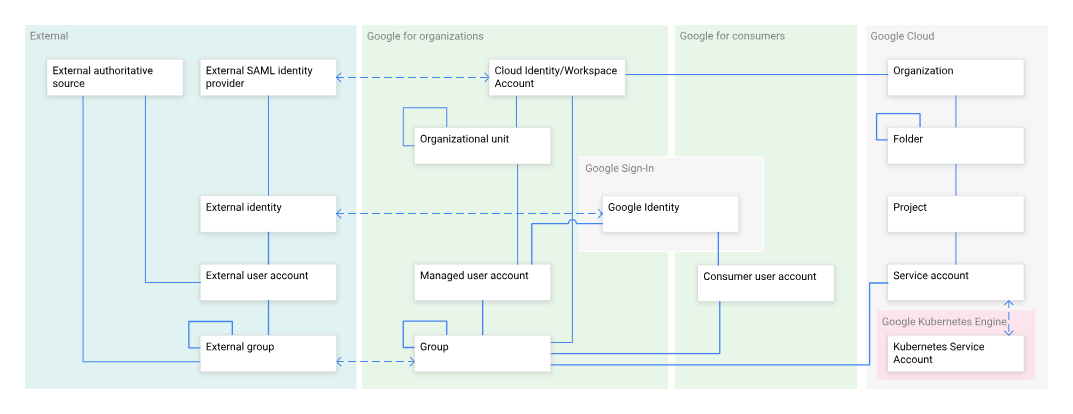
DV360 uses Google's identity graph to track users across different devices.
This provides a unified view of a user's journey. You can serve an ad to someone on their mobile phone in the morning, their work desktop in the afternoon, and their connected TV in the evening.
This enables sophisticated strategies like frequency capping across devices and sequential messaging. It ensures a cohesive brand story, which is vital for large-scale campaigns.
Deep Dive 2: Inventory Access and Ad Placements
Where your ads can appear is another major differentiator. Google Ads offers access to valuable properties, while DV360 provides access to nearly the entire programmable web.
Google Ads: Walled Garden of Google Properties
With Google Ads, your placements are limited to Google's owned-and-operated inventory. This includes Google Search, the Google Display Network, YouTube, Gmail, and Google Maps.
While this network is vast and covers a huge portion of internet activity, it is a walled garden. You cannot use Google Ads to buy inventory on an ad exchange that isn't part of the GDN.
DV360: Access to 90+ Ad Exchanges and Premium Deals
DV360 breaks down these walls. As a DSP, it is integrated with over 90 global ad exchanges.
This means you can bid on inventory from thousands of publishers, from small niche blogs to major media outlets. It gives you unparalleled reach and the ability to find your target audience wherever they browse.
You are not limited to Google's view of the internet.
Programmatic Guaranteed vs. Private Marketplace (PMP) Deals
DV360 also offers more sophisticated ways to buy media beyond the open auction. These are crucial for advertisers who need guarantees on quality and placement:
- Programmatic Guaranteed: A direct deal with a publisher for a fixed number of impressions at a fixed price. This mimics traditional media buying but with the efficiency of programmatic execution.
- Private Marketplace (PMP): An invitation-only auction where a publisher makes premium inventory available to a select group of advertisers. This provides access to high-quality placements before they hit the open auction.
Deep Dive 3: Ad Formats and Creative Flexibility
The types of ads you can run and the creative tools at your disposal vary significantly between the two platforms.
Standard Formats in Google Ads (Text, RSA, Video)
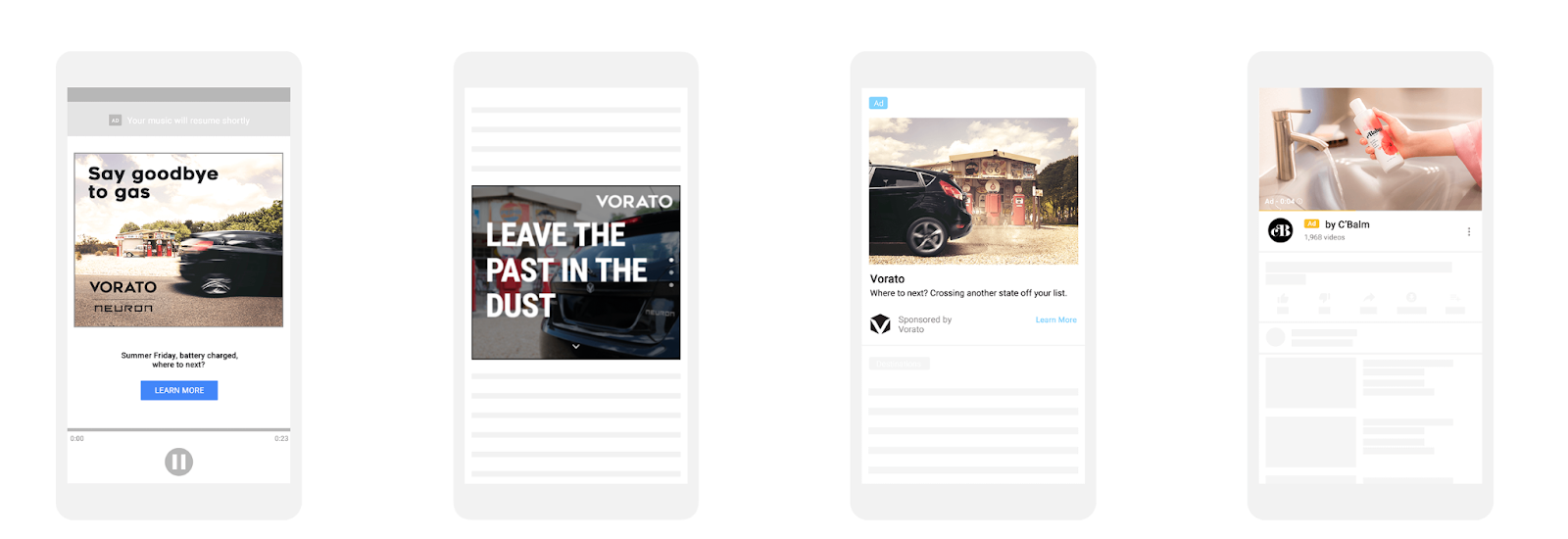
Google Ads supports a range of effective, standardized ad formats. These include:
- Responsive Search Ads (RSAs): Text ads that automatically mix and match headlines and descriptions.
- Responsive Display Ads: Image ads that adapt their size and format to fit available ad space.
- YouTube Video Ads: In-stream, in-feed, and bumper ad formats.
- Shopping Ads: Product-focused ads with images and pricing.
These formats are designed for ease of use and broad compatibility within the Google ecosystem.
Advanced and Rich Media Formats in DV360
DV360 is built for more immersive and innovative creative experiences. It supports all standard formats plus:
- Rich Media: Interactive ads with advanced features like video, animation, or games.
- Connected TV (CTV) Ads: Non-skippable video ads delivered on streaming services and smart TVs.
- Digital Audio Ads: Ads placed on platforms like Spotify, Pandora, and TuneIn.
- Digital Out-of-Home (DOOH): Programmatically purchased ads on digital screens in public locations.
This wide array of formats allows for truly cross-channel campaigns that engage users on every screen they use.
Creative Studio Integration for Dynamic Content
DV360 integrates seamlessly with Google's Creative Studio. This tool allows advertisers to build dynamic creatives. These are ads that automatically change their content based on user data.
For example, a travel ad could dynamically show different destinations based on the user's location, browsing history, or even the weather. This level of personalization drives significantly higher engagement and is a key feature for sophisticated advertisers.
Deep Dive 4: Bidding Strategies and Campaign Optimization
Both platforms use AI-powered bidding, but the level of control and customization differs greatly. The right bidding strategy can make or break your campaign's performance.
Google Ads: Automated Bidding for Simplicity
Google Ads has moved towards simplifying bidding for advertisers. Its automated "Smart Bidding" strategies use machine learning to optimize for specific goals.
The most commonly used Smart Bidding options include:
- Target CPA (Cost Per Acquisition): Google sets bids to generate as many conversions as possible while aiming to maintain an average cost per conversion close to your target. This strategy works best when conversion volume is stable and historical data is sufficient.
- Target ROAS (Return on Ad Spend): Bids are optimized to maximize conversion value while targeting a specific ROAS. This option is ideal for ecommerce and revenue-driven campaigns where conversion values vary significantly.
- Maximize Conversions: Google automatically allocates bids to drive the highest possible number of conversions within a given budget. This strategy prioritizes volume over efficiency and is often used during growth phases or budget testing.
- Maximize Conversion Value: Similar to Maximize Conversions, but optimized for total conversion value rather than count. It is commonly used when revenue or weighted conversion values matter more than pure volume.
- Enhanced CPC (ECPC): A semi-automated option that adjusts manual bids up or down based on the likelihood of conversion. While less common today, it can still be useful for advertisers transitioning from manual bidding.
- Manual CPC: Full manual control over keyword-level bids. This approach offers transparency but requires constant oversight and does not leverage real-time auction signals as effectively as Smart Bidding.
Smart Bidding strategies are powerful because they operate at auction-time scale and continuously learn from performance data across accounts.
However, they depend heavily on accurate conversion tracking, clean data, and sufficient volume. When those conditions are met, automated bidding can outperform manual strategies while significantly reducing operational complexity.
DV360: Granular Control with Custom Bidding Algorithms
DV360 offers all the standard automated bidding options but adds a layer of deep customization.
Advertisers can create custom bidding algorithms. This allows you to write scripts that tell the bidding model exactly which signals to prioritize. You can optimize for unique KPIs that are not standard in the platform, such as lifetime value or offline sales.
This level of control is essential for large advertisers with specific business goals and access to data science resources.
The Impact of AI on Optimization in Both Platforms
Both Google Ads and DV360 rely heavily on artificial intelligence.
In Google Ads, AI simplifies campaign management through features like Performance Max.
In DV360, AI provides deeper insights and allows for more complex optimization scenarios.
The choice depends on whether you want AI to manage the campaign for you (Google Ads) or want to use AI as a tool for more granular control (DV360).
Deep Dive 5: Cost, Pricing Models, and Budget Requirements
Financial considerations are often the deciding factor for many businesses. The platforms are structured for different scales of investment.
Google Ads Pricing: CPC, CPM, and No Minimum Spend
Google Ads is famously accessible. There is no minimum spend required to get started. You can run campaigns with just a few dollars a day. The pricing models are straightforward:
- Cost-Per-Click (CPC): You pay when someone clicks on your ad. This is common for search campaigns.
- Cost-Per-Mille (CPM): You pay per one thousand ad impressions. This is common for display and video awareness campaigns.
There are no additional platform fees. You only pay for the media you purchase.
DV360 Pricing: CPM-Based with Platform Fees
DV360 operates on a more complex pricing structure suitable for larger budgets. The primary model is CPM. However, there are additional costs to consider:
- Media Cost: The actual price of the ad impressions purchased via auction.
- Platform Fee: A percentage of the media cost charged by Google for use of the DV360 platform.
- Data Fees: If you use third-party data segments, there is an additional CPM cost for that data.
Access to DV360 often requires a contract with Google or a certified reseller, and significant minimum monthly spends are typically expected.
Budget Considerations: When to Graduate to DV360
A business should consider moving to DV360 when its marketing goals and budget have scaled significantly.
If you are spending tens of thousands of dollars per month on display and video, and your goals are shifting from pure direct response to broader brand building, DV360 becomes a viable option. It is not a starting point but a destination for mature digital advertisers.
Deep Dive 6: Reporting, Analytics, and Attribution
The reporting suites in Google Ads and DV360 are tailored to their respective functions. A complete understanding of performance requires a holistic approach to centralize your marketing analytics.
Standard Reporting in the Google Ads UI
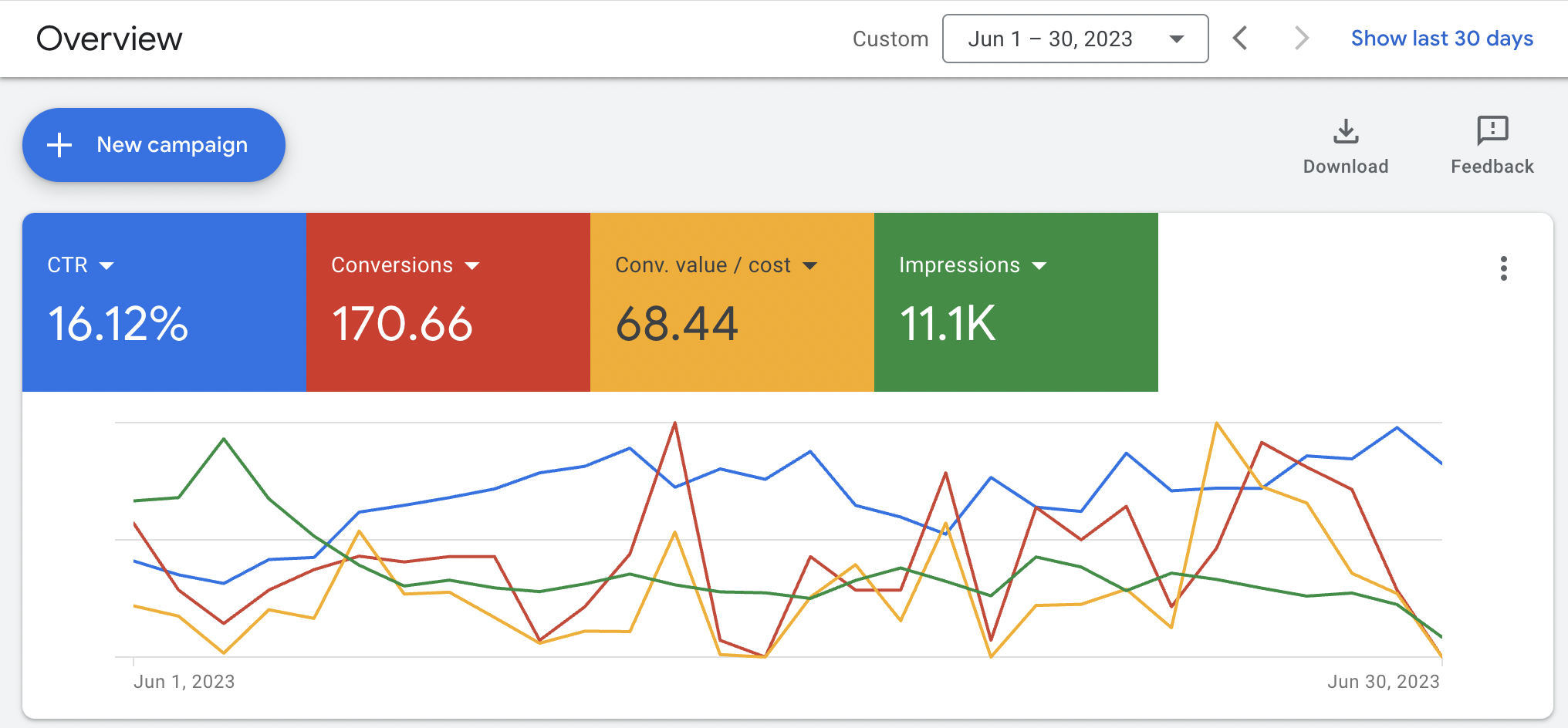
The Google Ads interface provides robust reporting for its own channels. You can easily track metrics like clicks, impressions, CTR, conversion rate, and ROAS. The reports are easy to generate and understand.
However, they are limited to data from Google Ads campaigns. As businesses grow, the need to automate reporting becomes critical to save time and reduce manual errors associated with pulling data from a single platform UI.
Advanced Analytics in DV360 with Floodlight Tags
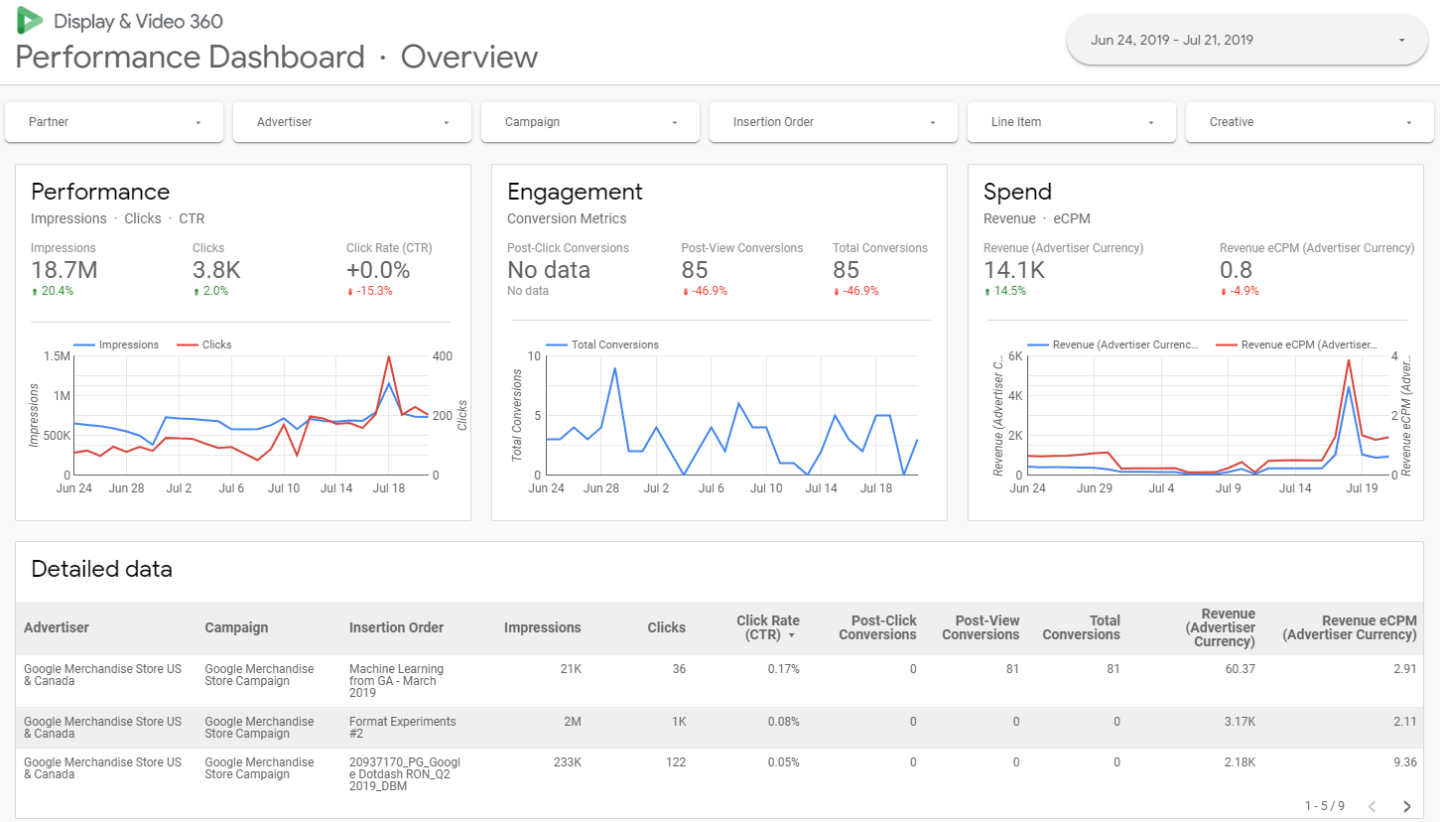
DV360 uses Floodlight tags, which are part of the Campaign Manager 360 (CM360) ad server. These tags provide much deeper insights into user behavior post-impression or post-click. You can track detailed conversion paths and build sophisticated audience lists.
Reporting in DV360 is more complex but offers a wealth of data, including advanced viewability metrics, brand safety reports, and reach and frequency analysis. Leveraging this rich data requires a well-structured marketing data pipeline to ensure information flows efficiently to your analytics systems.
Challenges in Cross-Platform Attribution
One of the biggest challenges advertisers face is attributing conversions correctly when using both platforms.
A user might see a DV360 video ad and later search for the brand on Google and convert via a Google Ads text ad. Without a unified view, it's hard to know which touchpoint deserves credit.
A centralized analytics layer is required to resolve this attribution gap, and this is where Improvado is commonly used.
Instead of relying on self-reported platform metrics, Improvado unifies data from DV360, Google Ads, and the rest of the marketing stack into a single attribution-ready dataset. This allows teams to de-duplicate conversions, align touchpoints, and analyze the full customer journey across channels.
Improvado supports cross-platform attribution by providing:
- Unified data ingestion from DV360, Google Ads, social platforms, analytics tools, and CRMs
- Identity and entity mapping to connect impressions, clicks, sessions, leads, and revenue across platforms
- Standardized event and conversion schemas to ensure consistent attribution logic
- Custom attribution model support, including position-based, time-decay, and data-driven approaches
- Warehouse-native transformations for scalable attribution analysis
- Governed metric definitions so attribution results remain consistent across reports and teams
- BI and AI enablement to visualize journeys and analyze attribution outputs at scale
With this foundation, marketers can understand how upper-funnel exposure influences lower-funnel performance, compare the true impact of DV360 versus Google Ads, and make budget decisions based on incremental value rather than last-click bias.
Strategic Use Cases: When to Choose Google Ads
Google Ads is the ideal choice for many businesses and specific campaign goals. Its accessibility and focus on intent make it a powerhouse for performance marketing.
Small to Medium-Sized Businesses (SMBs)
For SMBs, Google Ads offers the perfect balance of power and simplicity. The lack of minimum spend, user-friendly interface, and effective automated tools make it possible to compete with larger players and see a direct return on investment without a dedicated media buying team.
Direct Response and Lead Generation Campaigns
If your primary goal is to generate leads, sales, or sign-ups, Google Ads is unparalleled. Targeting users who are actively searching for a solution means you are reaching the most qualified audience possible. Search and Shopping campaigns are built specifically for these lower-funnel objectives.
Campaigns with Limited Budgets or Resources
Google Ads allows you to start small and scale up as you see results. The platform's automation handles much of the heavy lifting for optimization, making it manageable even for a single person or small team. It provides maximum impact for a limited investment.
Strategic Use Cases: When to Choose DV360
DV360 is designed for a different type of advertiser with more complex needs and larger ambitions. It shines where scale, data, and brand building are paramount.
Large Enterprises and Agencies
Enterprises and media agencies managing multiple large accounts need the centralized control and advanced features of DV360. The ability to manage cross-channel campaigns, integrate extensive data sources, and implement custom bidding makes it the professional's tool.
For these organizations, sophisticated ROI measurement across complex campaigns is a non-negotiable requirement that DV360 helps facilitate.
Brand Awareness and Upper-Funnel Campaigns
When the goal is to build brand recognition and reach a massive audience, DV360 is the superior choice. Its access to premium video, CTV, and audio inventory allows brands to tell compelling stories at scale. The focus is less on immediate clicks and more on building long-term brand equity.
Complex, Multi-Channel Digital Advertising Strategies
If your strategy involves sequential messaging, sophisticated audience segmentation, and a presence across display, video, mobile, and television, DV360 is the only way to manage this complexity effectively from a single platform. It provides the holistic view needed for cohesive, large-scale marketing initiatives.
The Power of Integration: Using Google Ads and DV360 Together
The ultimate strategy often involves using both platforms in tandem. Google Ads and DV360 are not mutually exclusive; they are complementary tools that can be used to build a powerful full-funnel marketing machine.
A Full-Funnel Approach: Awareness to Conversion
A classic full-funnel strategy uses DV360 for the upper funnel (Awareness and Consideration) and Google Ads for the lower funnel (Conversion).
You can run a broad CTV and video campaign in DV360 to introduce your brand to a wide audience.
Then, as users become aware and start searching for your brand or products, your Google Ads search campaigns capture that intent and drive the final conversion.
Visualizing this journey on comprehensive KPI dashboards is key to understanding full-funnel performance.
Sharing Audiences for Sequential Messaging
You can create audience lists in DV360 based on users who have seen your video ads. These lists can then be imported into Google Ads.
This allows you to run remarketing campaigns on the Search or Display Network specifically for users who have already been exposed to your brand message. This creates a cohesive and intelligent customer journey.
The Need for Unified Reporting
When running campaigns across both platforms, siloed reporting becomes your biggest enemy. You cannot optimize a full-funnel strategy without a single source of truth.
The complexity of combining data from these systems often requires specialized data integration tools to automatically aggregate performance metrics. This unified view is the only way to accurately measure a campaign's total impact and make informed budget allocation decisions.
Conclusion
There is no single winner in the DV360 vs. Google Ads debate. Most enterprise advertisers use both platforms because they serve different roles across the funnel. Google Ads captures existing demand with intent-driven search and lower-funnel formats. DV360 excels at reach, awareness, and programmatic scale across premium inventory.
The real challenge is not choosing between them, but understanding how they work together. Without unified reporting, performance analysis becomes fragmented and budget decisions rely on incomplete signals.
This is where Improvado helps. Improvado centralizes data from DV360, Google Ads, and the rest of your marketing stack into a single, governed dataset. It standardizes metrics, de-duplicates conversions, and enables cross-channel attribution and BI analysis. With a unified view, teams can evaluate true channel impact, optimize spend across platforms, and make decisions based on the full customer journey.
If you want clear insights across DV360 and Google Ads, request a demo of Improvado.
.png)




.png)
